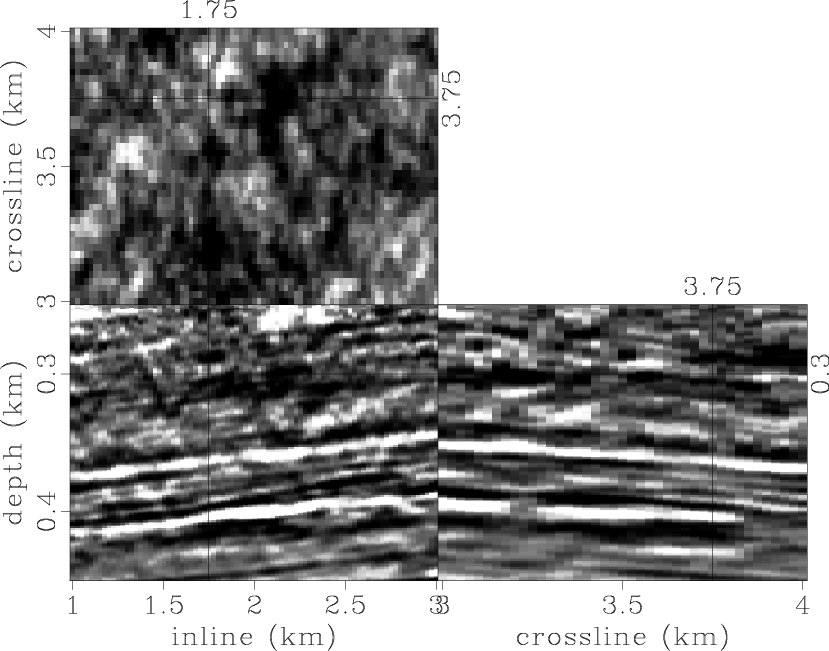|
|
|
|
Selecting an optimal aperture in Kirchhoff migration using dip-angle images |
We next applied our aperture-optimization technique to a field 3D data set obtained from the Piceance Basin area in Colorado, USA. Figure 23 shows a part of the Williams Fork Formation, which is a well-known reservoir that contains a number of channels and point-bar sand bodies (Pranter et al., 2007). Burnett (2011) and Klokov and Fomel (2012) previously analyzed the data by diffraction imaging and showed that a number of diffraction objects were clustered in the top part of the volume. The image is corrupted by migration artifacts, and diffraction objects are buried under the noise.
We performed slope-consistency analysis using a 10-degree dip-angle windows, a 50-m-square stacking base, and parameters ![]() and
and ![]() equal to
0.1 and 0.3, respectively (Figure 24).
Migration noise appears to be filtered out, whereas point objects in the shallow part are preserved. Diffraction objects are clearly observed
in the slice.
equal to
0.1 and 0.3, respectively (Figure 24).
Migration noise appears to be filtered out, whereas point objects in the shallow part are preserved. Diffraction objects are clearly observed
in the slice.
For comparison, we migrated the data using a limited aperture of 10 degrees in two principal directions (Figure 25). Although most of the migration artifacts have been successfully eliminated, diffraction objects from the top part get smeared. These objects have low energy caused by scarcity of migration dips in the aperture.

|
|---|
|
image3
Figure 23. Initial 3D image for Piceance Basin data set. |
|
|

|
|---|
|
image-clean
Figure 24. Image after migration-aperture optimization by slope-consistency analysis. |
|
|

|
|---|
|
image3s
Figure 25. Image obtained after migration with limited aperture. |
|
|
|
|
|
|
Selecting an optimal aperture in Kirchhoff migration using dip-angle images |